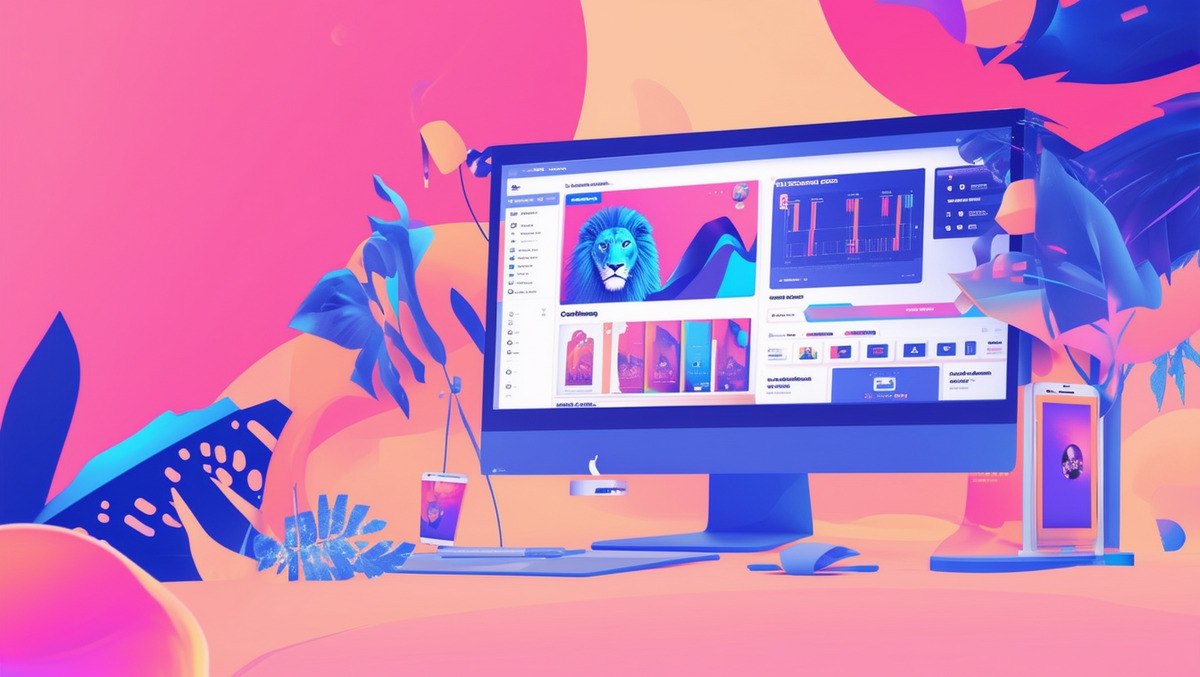It’s time for another edition of the Post Performance Report (PPR), a series where we showcase social media posts and campaigns inspiring us, and explore what makes them so genius. We unpack how your brand can use these examples to spark your own scroll-stopping ideas—while maximizing your budget and doing more with less.
This month, we’re fascinated by brands using AI to enhance their social presence. Candidly, social media users are still largely split on how they feel about brands dabbling in AI content creation. According to a Q1 2024 Sprout Pulse Survey, 38% of consumers would be more interested in a brand that posted AI-generated content on social, while another 39% say they would be less likely to engage. More than one-third (36%) say they wouldn’t even be able to spot an AI-crafted post.
Despite the polarizing nature of AI content, some brands are finding a way to cut through the negative chatter and use AI to their advantage. From speeding up content creation to leaning into whimsy to making their posts distinctly more human. Let’s dive into our lineup of brands who strike the right balance between human and machine-made, and takeaways you can use to follow suit.
ESPN: The alternate jersey-verse
ESPN, the prolific sports news company, uses AI to churn out content imagining athletes in alternate jerseys. Whether it’s to capture what might have been if an athlete had played for another team, or to share a first look at a player who’s been traded.
ESPN is able to achieve this effect by using Photoshop AI tools, like this video by creator @tysonbennett_ illustrates.
Posts from the alternate jersey-verse rack up thousands of comments and hundreds of thousands of likes. Many of the comments are fans expressing their heated opinions about drafts, trades and career decisions—proving why this content is an engagement generator for ESPN.
Without AI, the ESPN social or creative teams would have to spend hours tediously editing photos, hindering their ability to post breaking news about the latest trades and signings quickly. But Photoshop makes it possible to craft these images in just a few minutes, fueling an endless supply of quickly generated jersey-swap content.
ESPN’s conversation-starting posts help them land on users’ Home pages and increase their engagement. For example, this post featuring Caitlin Clark generated over 318,000 likes and almost 2,000 comments in less than 24 hours.
The play: Using AI to generate templatized images makes quick work of creating content, saving your team time and helping your brand stay top of mind.
Get Dirty: The real influencer vs. her AI bot
According to a survey of 2,000 consumers Sprout conducted in February 2024, 37% of consumers say they’re more likely to be interested in brands who use AI influencers, and that rises to 46% among Gen Z.
But what exactly is an AI influencer? In some cases, it’s a brand using an entirely AI-generated “person” as an account avatar. Many of these “influencers” are eye-catching women. Some are so realistic that users slide into their DMs to ask them on dates. But this formula (beautiful bot + product = brand awareness) is starting to become a trope online.
Other AI influencers are AI-generated images and videos of creators who sell their likenesses to brands to use in content about their products. Like when the personal hygiene brand Get Dirty commissioned a video:

The post ended up going viral, and the comment section was filled with equal parts excitement, skepticism and concern. The brand responded by hiring Ariel, the human influencer whose image they used, to star in a content series alongside herself—or, her AI self that is.


Get Dirty proved that human and AI influencers can live together in harmony, and it paid off for their brand. The original viral post drove 250,000 views on X (formerly Twitter), and their subsequent partnership with Ariel led to the story being picked up by major news outlets like AdAge, resulting in major attention for the relatively unknown brand.
The play: Ditching human influencers exclusively for AI influencers will backfire. But by working with human creators and influencers on AI-generated content, you could intrigue audiences and foster engagement, rather than sending them down a dystopian rabbit hole.
Meta: AI-dorable
Meta is betting on an AI-powered future. The brand just announced their next generation of AI infrastructure, and has been promoting Meta AI, their AI lab. While much of the conversation surrounding AI is serious (for good reason), Meta is using light-hearted content to break the ice.
Meta is starting AI conversations in a way that feels approachable and familiar on social: cute cat content.
Like this roundup of cloud-inspired images.

Comments on the post range from “I want to be sitting on the couch with my kitty eating a cloud cookie ” to calls for a Meta-hosted creator AI festival.
Other Meta AI content features pet portraits and photoshoots—a relic of social media days of yore—with a modern twist.
Promotion of Meta AI has helped the brand and its AI lab secure 10 million impressions on X, according to Sprout Listening data from March 12 to April 11, 2024.
The play: AI is a complex and often divisive topic. Yet, it remains a central part of the cultural zeitgeist and will only become more relevant moving forward. Instead of shying away from it, take a cue from Meta by leaning into it in a way that feels familiar and fun. Transparency (i.e., labeling AI-generated content as such) will help you retain trust now and in the future.
Dove: On an anti-AI mission
20 years ago, the personal care brand Dove unveiled their Real Beauty campaign. To mark the anniversary, the brand is doubling down on their mission to #KeepBeautyReal by taking a stand against bias in AI-generated images.

In their latest video, a generative AI tool is prompted to create an image of a beautiful woman, and it unsurprisingly spits out a stereotypically flawless femme. But then, “in a Dove Real Beauty campaign” is added to the prompt—which expands the definition of “beautiful woman” to include different ages, backgrounds, races and lived experiences.
At the end of the video, the brand pledged never to use AI to create or distort people in their content, reiterating that real beauty is better than anything a computer could create.
In just a few hours, the video generated thousands of likes, hundreds of comments, and was picked up by news outlets like TODAY and Fox Business. This campaign drove brand awareness and reach among a new generation, while embodying the timely fears many people have about AI content.
The play: AI is a powerful tool for data analysis, customer care and workflow optimization. But it can also inadvertently create unrealistic beauty standards and expectations. When creating AI content, remember the ethical implications of what you’re doing and use AI thoughtfully when telling your brand’s story.
AI spotlight: Cowboy Carter album art
Beyoncé’s latest genre-defying album, Cowboy Carter, launched at the end of March. The buzz surrounding the album surpassed 12.2 billion impressions, 16 million engagements and 2 million unique conversations, according to Sprout listening data from March 12 to April 11, 2024. Though more culture-defining milestone than brand activation, the momentous drop has a surprising relationship to AI that marketers can learn from.
The photographer behind the album’s iconic cover used AI to inspire the image. According to an interview with AfroTech, the photographer Blair Caldwell says he uses AI storytelling tools to create mood boards that capture the essence of his shoots and help perfect his artistic vision. In the interview, he also doubled-down on the importance of human photographers—suggesting that AI should be more virtual assistant than creator.
The play: AI can be a helpful sparring partner when it comes to generating content ideas and finalizing your vision. It can help take great ideas to the next level, and allow you more time to devote to creating the work itself.
The brand AI revolution is here: Humans should be at the helm
That wraps up this month’s edition of the PPR. Next month, we’re exploring brands who use onsite events to fuel their content pipeline. In the meantime, remember these takeaways when experimenting with AI-generated content:
Post Performance Report Takeaways
- AI shouldn’t replace humans. It should make your workflows more efficient and give you more time to work on strategic initiatives.
- Working alongside influencers and creators on your brand’s AI-generated content will create a more interesting finished product.
- Showing your followers how AI works doesn’t ruin the mystery. It can actually spike their intrigue and earn their trust.
Looking for more on how to thoughtfully weave AI into your social marketing strategy? Read our guide to conversational AI, and how it can positively impact the customer experience.
And if you see a social post or campaign that deserves to be highlighted, tag us @sproutsocial and use #PostPerformanceReport to have your idea included in a future article.





